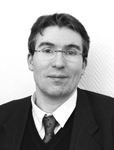 Telecommunication, defence, automotive, space and imaging systems require radio frequency and microwave integrated circuits using different processes, with semiconductor devices and ICs forming the core of today’s microwave and mm-wave systems. European microwave companies and research centres produce, develop and are involved in research that covers a broad range of technologies, which play an increasingly significant role in everyday life and open up new opportunities for economic development. Nowadays, applications have spread to a multitude of technological fields: mobile communications, new digital televisions, next generation radar systems, radiolocation devices and extremely high frequency systems that extend to the THz region.
Telecommunication, defence, automotive, space and imaging systems require radio frequency and microwave integrated circuits using different processes, with semiconductor devices and ICs forming the core of today’s microwave and mm-wave systems. European microwave companies and research centres produce, develop and are involved in research that covers a broad range of technologies, which play an increasingly significant role in everyday life and open up new opportunities for economic development. Nowadays, applications have spread to a multitude of technological fields: mobile communications, new digital televisions, next generation radar systems, radiolocation devices and extremely high frequency systems that extend to the THz region.
With regards to the marketplace itself, the III-V semiconductor industry is still suffering from the 2008/2009 financial crisis; although the consequences were not as catastrophic as those of the telecom crisis of 2000/2001. This is due, to some extent, to the technological evolution and innovation the III-V European industries are undertaking (e.g. Fablight) and also because the defence market was partially spared. Against this background, in this brief overview of the IC/Semiconductors sector, I would like to identify, from the European point of view, the present and future trends, stressing how the technology is evolving and where the greatest impact is likely to be. Silicon technologies are steadily improving their operating frequency and their level of integration, as is illustrated by RF automotive electronics where Si based technologies are without rival, except for short range and long range anti-collision equipment. Also, Si based processes combine low cost and ease of on-chip integration of RF or AMS circuits and digital functions.
Gallium Arsenide technology continues to be the driving force in many of the RF/HF industries, ranging from telecommunications to defence. GaAs can still compete with other technologies and remains the benchmark in terms of performance.
Gallium Nitride technologies are able to provide very high RF power density over a wide frequency range at excellent power added efficiency (PAE) and also exhibit high values of breakdown voltage under high temperatures. For example GaN HEMT can surpass LDMOS technology with regards to base station power amplifiers. There is currently dynamic academic research and industrial development in the GaN devices sector. For instance, in the second half of 2010, UMS SAS will be introducing lumped 0.5 µm GaN technology.
Other issues include the advancement of plasmonics for QCL in the THz range. HF semiconductor device technologies could play a major role, in the near future, in the development of the THz sector, providing tuneable sources and detectors under moderate bias conditions at low cost, and thus narrowing the gap between the microwave and optics domains.
The microwave photonics interdisciplinary area continues to be a dynamic topic giving rise to increasing research efforts, as does the development of wafer-scale graphene RF electronics, with grapheme and CNT seeing a significant amount of research activity. The development of millimetre-wave and submillimetre-wave devices and circuits from SiGe to III-V compounds is continuing to progress. Furthermore, III-V integration on Si and III-V isolated gate FETs are among the leading themes driving research in Europe.
Also, the need to reduce the cost of module manufacture, which is extremely high, is provoking continued demand on the packaging of MMICs, using SMD technology for frequencies up to 40 GHz and beyond. In the 30 to 60 GHz frequency range, the enhanced plastic QFN has proved to be very useful and efficient, while beyond 60 GHz, EM coupled plastic packages and Wafer Level Packaging techniques are helping to reduce costs.
Finally, I would like to stress that advanced simulation and modelling is a key factor in order to achieve RF and HF circuits and systems. Thermal modelling appears to be a key issue for high power devices such as GaN HEMT and especially for ultra short gatelength transistors. New models have to be developed to simulate accurately the thermal behaviour of such devices.
